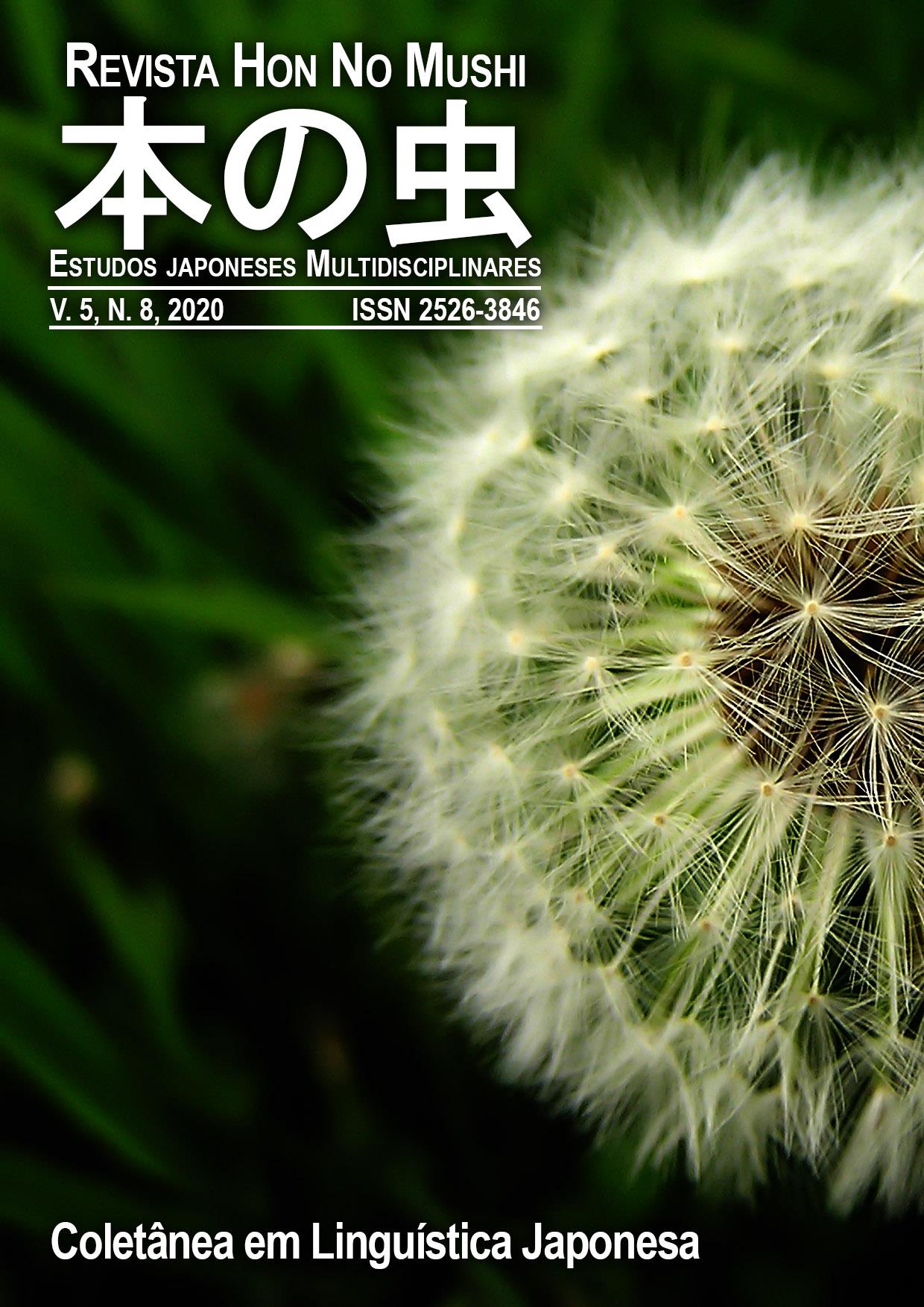THE INTERMODALITY ON THE READING OF NON-PEDAGOGICAL JAPANESE GAMES
AN EXPLORATORY RESEARCH
Keywords:
Videogames, Kanji, MultimodalityAbstract
One of the most highlighted questions on the use of non-pedagogical video games as language learning tools is if the student is able to read during gaming sessions. Being a multimodal media (KRESS, 2009), games are not such as static text, and “reading” in games does not rely only on the comprehension of the written mode. Various modes interact and develop immersion (CSIKSZENTMIHALYI, 2014; SALEN; ZIMMERMAN, 2003) that can be seen as an authentic and contextualized use of the language (GILMORE, 2007; NEWCOMBE; BRICK, 2017), however, little is known about the effectiveness of this media to the reading learning practice. Specially Japanese, with its complex writing system (OLIVEIRA, 2019). Questions like “can my student read this?”; “Is it not too difficult for him?” “Do these images not disturb him?” were the guides to rise the proposition: Is the contextualized language (NEWCOMBE; BRICK, 2017) on video games capable of providing any acquisition of the Japanese writing system? (BASSETTI, 2019). In order to analyze it, 19 students informed their Japanese reading habits. Then, 3 of them, with different Japanese levels of proficiency, played the games Osu! Tatakae! Ouendan! and Kukkingu Mama in one gaming section. The reports were recorded and allow us to infer that the Japanese reading skills have an effect on the understanding of the written mode. However, the multimodal environment seems to be beneficial to encourage the gamers, even on the first levels.
Downloads
References
ALCÂNTRA, A. Análise dos recursos visuais do livro didático de japonês Marugoto. 2018. 35 f. Monografia (Graduação em Letras) - Graduação em Língua e Literatura Japonesa, Universidade de Brasília, Brasília-DF, 2018.
BASSETTI, B. Learning second language writing systems. Disponível em: /www.llas.ac.uk/resources/gpg/2662>. Acesso em jul. de 2019.
BRUNETTI, C.; VILELLA, S. O papel do quadro comum europeu de referência para idiomas: aprendizagem, ensino e avaliação (qcer! na internacionalização das IES: uma análise sob a perspectiva do letramento crítico e dos multiletramentos. Trabalhos em linguística aplicada, v. 57 , n. 2, pp. 1164-1188, 2018.
CÓRDOVA, D. A pesquisa científica. In: GERHARDT, T. SILVEIRA, D. Métodos de pesquisa. Rio Grande do Sul: UFRGS. 2009, p. 31-42.
CSIKSZENTMIHALYI, M. Flow and foundations of positive psychology: The collected works of Mihaly Csikszentmihalyi. New York: Springer, 2014.
DEHAAN, J.; REED, M.; KUWADA, K. The effect of interactivity with a music video game on second language vocabulary recall. Language Learning & Technology, v. 14, n. 2, 74-94, 2010.
FONSECA, J. Metodologia da pesquisa científica. UECE, Fortaleza - CE, 2002.
FRANCISCO, J. Videogames e ensino de japonês: aplicabilidade e possibilidades de uso para o desenvolvimento de estratégias de leitura. 2016. 91 f. Monografia (Graduação em Letras) - Graduação em Língua e Literatura Japonesa, Universidade de Brasília, Brasília-DF, 2016.
GEE, J. What video games have to teach us about learning and literacy. New York: Macmillan, 2003.
GILMORE, A. Authentic materials and authenticity in foreign language learning. Lang. Teach, n. 40, p. 97-118, 2007.
HOWLAND, G. Game design: the essence of computer games. Disponível em:
< http://facweb.cs.depaul.edu/andre/gam244/Lecture3/Lecture3.ppt>. Acesso em: 04 jan. 2020.
KENSKI, V. Tecnologias e tempo docente. São Paulo: Editora Papirus, 2013.
KIJIMA, H.; SHIBAHARA, T.; HATTA, N. Marugoto. Tokyo: Sanshusha, 2014.
KRESS, G. Multimodality. Pedagogies, an International journal, v. 4 n.3, p. 164-195, 2009.
LEFFA, V.; BOHN, H.; DAMASCENO, V.; MARZARI, G. Quando jogar é aprender: o videogame na sala de aula. Rev. Est. Ling., v. 20, n. 1, p. 209-230. 2012.
MILLS, K.; UNSWORTH, L. Multimodal literacy. Oxford research encyclopedia, Education. Resumos... Oxford University, 2018. p. 1-32.
MINAYO, M.; DESLANDES, S.; NETO, O.; GOMES, R. Pesquisa social: Teoria, método e criatividade. Petrópolis - RJ: Editora Vozes, 2002.
NEWCOMBE, J.; BRICK, B. Blending video games into language learning. International Journal of Computer-Assisted Language Learning and Teaching, v. 4, p. 75-89, 2017.
NEWMAN, J. Videogames. Nova York e Londres: Routledge, 2004.
OLIVEIRA, V. A aplicação do jogo jukugeemu: é possível aprender vocabulário e ideogramas de língua japonesa jogando?. 182 f. Dissertação (Mestrado em Letras) - Programa de Pós Graduação em Linguística Aplicada, Universidade de Brasília, Brasília-DF, 2019.
SALEN, K.; ZIMMERMAN, E. Rules of play: Game design fundamentals. Massachusetts. Mit Press, 2003.
SWEETLAND CENTER FOR WRITING. Supporting Multimodal Literacy. Disponível em: <https://lsa.umich.edu/sweetland/instructors/teaching-resources/supporting-multimodal-literacy.html>. Acesso em: 04 fev. 2020.
VIDAL, C. Multimodalidade e traduções funcionais para investivar a aquisição de segunda língua em gamers. Dissertação (Mestrado em Tradução) Programa de Pós-Graduação em Estudos da Tradução, Universidade Federal de Santa Catarina, Florianópolis, 2011.
WALSH, M. (2015). Reading visual and multimodal texts: how is "reading" different?. Disponível em: <https://pdfs.semanticscholar.org/f9aa/e98fbd67bb2a9ddaa43ed2415e8f689fd7c9.pdf 2020>. Acesso em: 13 jan. 2020
WOLF, M. J. Assessing interactivity in videogame design. Mechadamia, v. 1, p. 78-85, 2006.
Downloads
Published
Issue
Section
License
The copyright belongs to the Hon Journal in Mishi - Multidisciplinary Japanese Studies and to the authors of each article. All work or part of it, when quoted or used, must be referenced.




